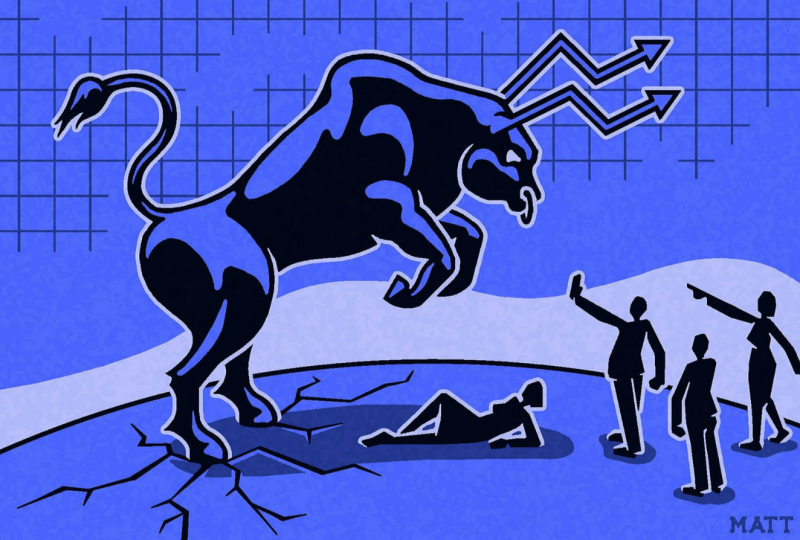Stock Market News Live Updates: S&P 500 Closes At All-Time High Ahead Of Christmas As Investors Shrug Off Omicron
Dec 23, 2021

The S&P 500 set a new high on Thursday as the Dow and Nasdaq rallied ahead of the holiday season on encouraging information suggesting that the Omicron strain has smaller chances to bring patients to the hospitals than its parent variants. The markets recovered losses at the start of the week as traders brushed off concerns that the new strain would slow economic growth.
The S&P 500 finished the week at a record peak of 4,725.72, while the Dow finished the week near 36,000. The Nasdaq Composite finished 130 points higher, or 0.85%.
"It is believed that the pandemic may be stopped by considerable mutational changes of the virus. In that respect, I think Omicron could be our ally since it has notable mutations that make it less damaging than its parent," Dr. David Katz, True Health Initiative President, commented.
In other COVID-19-related news, Merck (MRK) gained approval from the US Food and Drug Administration for its coronavirus medicines on the day after Pfizer (PFE) got approval for its own medication.
According to clinical trials, molnupiravir, a capsule created by Merck in collaboration with Ridgeback Biotherapeutics, reduced hospitalization level and mortality by about 30%. Capsule created by Pfizer was proven to be 90% effective in reducing hospitalization level and mortality in high-risk individuals.
Merck's equities dropped 0.54% in early trade to $75.75 per share, while the equities of Pfizer fell 1.49% to $58.66 per share.
Traders analyzed a slew of economic data before the Christmas weekend.
The Labor Department announced that initial unemployment claims totaled 205,000, continuing a declining pattern from epidemic highs and indicating employment market tightness caused by increased need for employees in 2022. The four-week moving median for new applications fell to its weakest level in 52 years, rising by 2,750 over the week to 206,250.
At the same time, retail prices in the United States rose at the quickest rate in nearly 40 years, as buyers faced soaring inflation rates before the Christmas break.
"Employees have a lot of influence, which is likely to lead to more pay increases. What bothers us from an inflation viewpoint is when we could witness these inflation concerns passing the baton to the job market," Girard chief investment officer Timothy Chubb said.
Meanwhile, new house sales in the United States increased 12.4% in the previous month to a seven-month record of 744,000, boosted by low mortgages and an increased need for houses in the real estate market.
Durable products contracts in the United States increased by 2.5% in November, bolstered by a substantial increase in airplane contracts.
On the trading day on Wednesday, traders considered a positive report on the level of consumer confidence and the publication of an optimistically updated projection for gross domestic product, putting all three main indices in the positive area after a choppy start.
The Conference Board stated that consumer confidence improved by a larger margin than predicted at the beginning of this month, with the main index reaching 115.8 for December, above Bloomberg's analyst expectations of 111.0. The indicator had a level of 111.9 in the previous month, up from the initial figure of 109.5. At the same time, the country's GDP rose at an annualized pace of 2.3% in the third quarter, according to the Bureau of Economic Analysis' estimation results following an initial paper of 2.1%.
"We've been suggesting this is a "buy on the downside" market since we anticipate additional profit increases. We believe that the actual argument is really about the duration and intensity of the upcoming economic cycle," Anik Sen from PineBridge Investments said.
With Thursday's gain, investors may be preparing for the year-ending Santa Claus Rally, in which the equities rise in the last seven trading sessions of a year, plus on the first two trading days of the new year. From today, investors will be watching closely for proof that almost a century's worth of data is upheld.
For unknown reasons, the S&P 500 has risen 77% during the year-ending rally phase over the past 92 years, as Sundial Capital Research's numbers showed. Throughout this nine-day trading session, the average growth was 2.66%.




